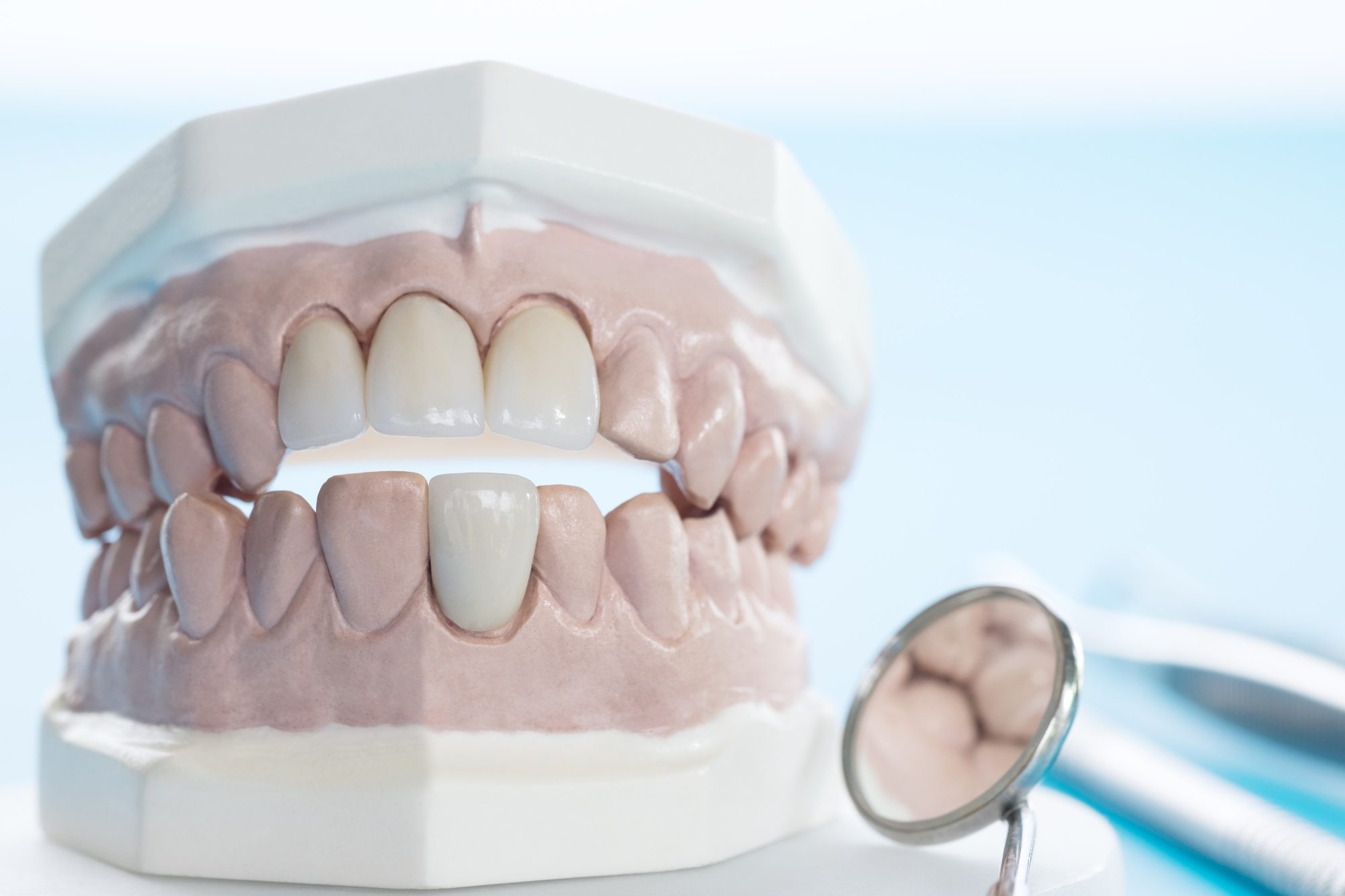Cavities are entirely preventable, yet 96% of adults have had one. In this post, we are going to discuss treatments for tooth decay. You can check out our ebook on dental caries if you’d like to learn more about prevention!

Dental fillings are the most common treatment for cavities or tooth restoration. Thankfully, we live in an era when dental treatments have become much more comfortable and long lasting. Read on to learn about the types of dental fillings, materials used, sensitivity and allergy issues.
What Are Dental Fillings?
Cavities usually occur from a combination of sugary or acidic foods and lack of brushing/flossing. They can also be due to medical issues such as dry mouth, or even genetics (some people have softer enamel than others). Unfortunately, unless it is quite small, we can’t just leave a cavity and hope it goes away. Depending on the severity, your dentist may recommend a variety of treatment options ranging from enamel remineralization to a filling, crown, or even a root canal if the cavity extends into the nerve of your tooth.
Dental fillings can be made from a variety of materials that essentially “fill” in an area that was removed due to decay.
Did you know fillings aren’t only used to fix cavities? They can also restore cracked teeth or teeth that have worn away in areas due to acid erosion or tooth grinding.
Types of Dental Fillings
Dental fillings come in all different types, each with its own set of pros and cons. Let’s take a closer look so you can make an informed decision with your dentist the next time you need a filling.
Silver amalgam fillings
Silver amalgam fillings were the most popular filling option until better composite (white) filling materials were developed in the 1990’s. Amalgam was the choice for dentists and patients due to their long-lasting results and low cost. They may still be used in rare cases where white fillings aren’t possible to place.
They are often mixed with tin, zinc, copper, and mercury. Sometimes these metals can cause an allergic reaction in patients that already have a sensitivity. They don’t match the colour of your teeth and can also cause your tooth to look grey over time. They can cause cracks in teeth, which can result in future tooth fracture or loss.
Composite Fillings
The majority of fillings that dentists now place are composite (white) fillings. Since composite is available in a variety of shades and can be matched to the colour of your natural teeth, many patients prefer them. These fillings are very versatile and can also be used on front or back teeth.
While so far this sounds like the clear winner, there are some disadvantages. They are more expensive than silver fillings, and tend to require replacement more frequently. Composite fillings are more technique sensitive and if the bonding is not done properly, it can result in post operative tooth sensitivity that can last for several months. They also have decreased lifespan (5-7 years) if the filling is larger or placed without proper isolation.
Glass ionomer fillings
These fillings have fluoride in them, which helps prevent your teeth from developing further decay. However, they are a softer material and don’t last as long as other filling options.
Dentists occasionally use these as a temporary filling for adults before an upcoming restoration or tooth repair appointment. They are not technique sensitive to place, so they are often used for baby teeth in children as well.
Gold fillings
You may be taken by surprise if someone smiles with a gold tooth reflecting back at you. Just like the iconic villain in Home Alone, gold teeth were more popular decades ago. Now, they’re a lot less common for cosmetic reasons. However they last the longest out of any dental filling (25+ years). These fillings require a lot of skill by the dentist to make.
Gold fillings are more expensive and require two visits to the dental office in order for them to be made. During the first visit, the dentist removes the decay and takes an impression of the tooth. In the second visit, the gold filling is cemented in. Anesthetic is required at both appointments, and you would have a temporary filling while the gold one is being made. This may be a good option if you’d like a little bling that will stand the test of time.
Ceramic/Porcelain Fillings
Fillings can also be made of porcelain or ceramic. However, these fillings have been found to have a high failure rate and are no longer recommended in most cases. This type of filling would also require two visits to make (as for gold fillings) and are more expensive than a regular white filling.
Sensitivity and Allergy Issues
It’s completely normal to feel some sensitivity after a filling. Sugary foods or drinks, pressure, and even temperature can cause a brief flare-up. Sensitivity usually begins about 48 hours after your appointment because this is the peak of inflammation. However, if this keeps up for more than a month, you should talk to your dentist. You may require anything from a simple bite adjustment to a more complex solution, like a root canal. Your dentist will be able to find the cause and offer a solution that will leave you pain-free.
It’s rare to be allergic to dental fillings, but it can happen for amalgam fillings. Some reports have even stated patients experienced swelling, rashes, and oral lesions. While there have been less than 100 cases reported, this happens if you’re allergic to any materials in the filling. That’s why it’s more common in metal (amalgam) fillings that have mercury, chromium, nickel, beryllium, etc.,
Dental fillings are sometimes necessary for children and adults to maintain their oral health and support the strength of their teeth suffering from decay. If you’ve been experiencing pain from a toothache, feel sharp edges on your teeth, or notice a cavity, book an appointment before it becomes a more expensive problem.
It’s recommended you visit your dentist for a check-up twice per year. Haven’t seen us in a while? We’d love to help strengthen your smile. Book your appointment today.
Have you ever had a filling? Do you remember what type you got? What material would you choose? Share your answer with our readers that are booking a dental filling appointment.



